Sharpening a pizza cutter is a valuable skill that can enhance its cutting efficiency and prolong its lifespan. A dull pizza cutter can make slicing through crusts and toppings a frustrating experience, leading to uneven slices and potentially damaging the pizza itself. In this article, we will explore the techniques and steps required how to sharpen a pizza cutter effectively.
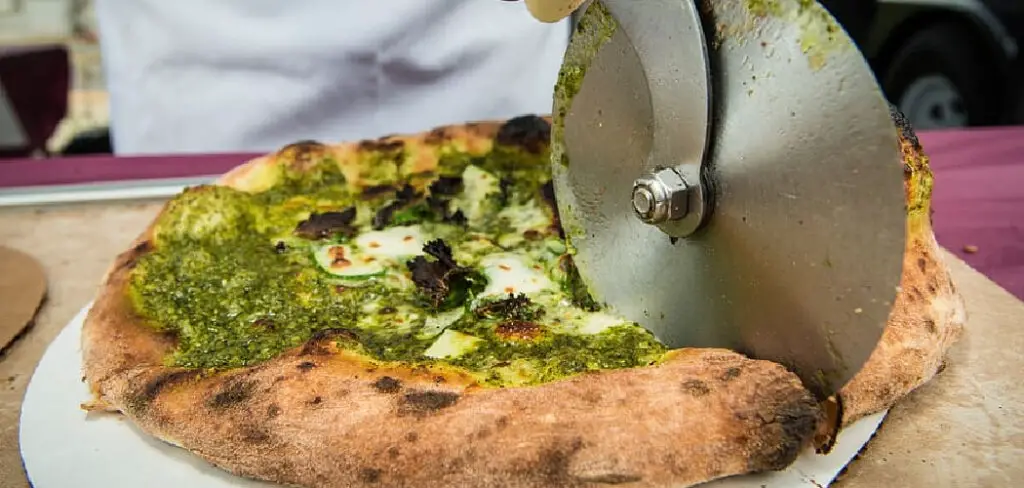
Whether you’re a pizza enthusiast or a professional chef, mastering this skill will ensure that your pizza cutter remains sharp and ready to deliver precise cuts every time. From understanding the anatomy of a pizza cutter to selecting the right sharpening tool, we will guide you through the process of restoring the sharpness of your pizza cutter blade. Get ready to level up your pizza-cutting game with these valuable sharpening tips!
Understanding the Importance of a Sharp Pizza Cutter
A sharp pizza cutter is essential for ensuring that you get the perfect slices of pizza every time. It will also help to ensure that your pizza looks neat and attractive, which can be important in a restaurant setting.
A dull pizza cutter can cause jagged edges on your pizza slices or even cause them to crumble apart. Additionally, using a dull blade may require more force, potentially leading to potential injuries.
It is, therefore important to regularly sharpen your pizza cutter in order to maintain its efficiency and safety. However, it is important to note that the sharpening process should not be done too frequently – this could damage the blade. With these considerations in mind, let’s look at how to sharpen a pizza cutter.
Exploring the Benefits of Regularly Sharpening a Pizza Cutter
If you are a pizza lover, then having the right pizza cutter is essential for enjoying your favorite slices. However, keeping your blade sharpened and in good condition isn’t just important for cutting through thick or thin crusts with ease – it can also provide other benefits to help make food preparation easier.
Sharpening a pizza cutter regularly helps ensure that your knife will be able to cut evenly and precisely when working with more delicate ingredients. This can be incredibly helpful when slicing vegetables like tomatoes or mushrooms, making sure that each slice is uniform and looks professional on the finished dish.
Not only does this practice lead to better looking results, but it also makes prepping toppings much faster and less labor intensive.
Having a sharp pizza cutter also makes the entire cutting process safer. Dull blades can lead to slips and accidents, as they may require more pressure to cut through tougher substances. By keeping the blade sharpened, you will be able to apply less force while still achieving the same results. This reduces the risk of injury during food preparation and makes slicing easier on your hands.
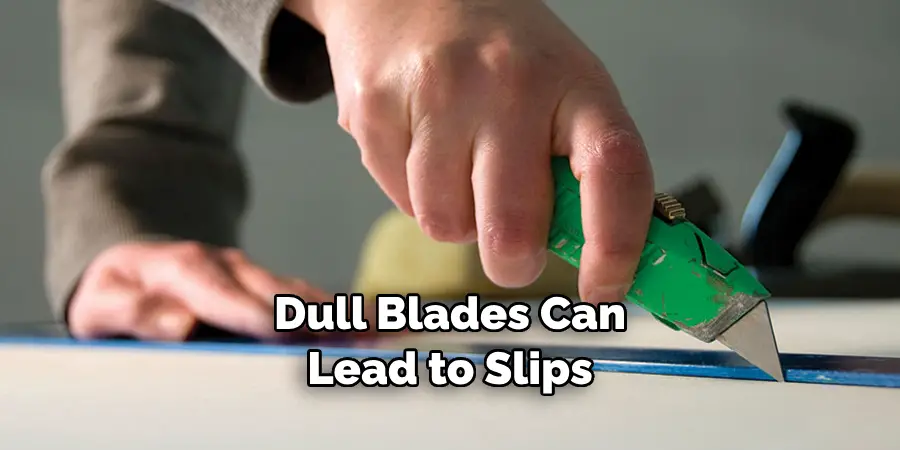
Overall, taking care of your pizza cutter by regularly sharpening it is an important practice that can prevent accidents and make cooking simpler and more efficient. So before you reach for your favorite utensil next time you’re making pizza – or any dish requiring precise slicing – make sure it has a nice sharp edge!
Identifying Signs of a Dull Pizza Cutter
When you have a dull pizza cutter, it can be difficult to effectively slice through your pizza. If the blade is not sharp enough or has nicks, dents, and scratches in it, then it will not be able to make clean slices. Here are some signs that indicate that your pizza cutter might need to be sharpened:
- The slices coming out from the pizza cutter have jagged edges
- It takes more pressure than usual for the cutter to move through dough
- The blade does not cut all of the way through on one pass
- The cuts don’t look as neat as they used to
- There is visible damage on the blade such as chips or bends in its surface.
If these signs are present, then it’s time to sharpen your pizza cutter. Here are some tips on how to do this safely and effectively.
10 Methods How to Sharpen a Pizza Cutter
Method 1: Using a Sharpening Stone
A sharpening stone is a traditional and effective tool for sharpening a pizza cutter blade. Start by moistening the stone with water or oil, depending on the stone’s instructions. Hold the pizza cutter firmly and glide the blade back and forth across the stone at a consistent angle. Repeat this motion several times, alternating sides, until you achieve a sharp edge.
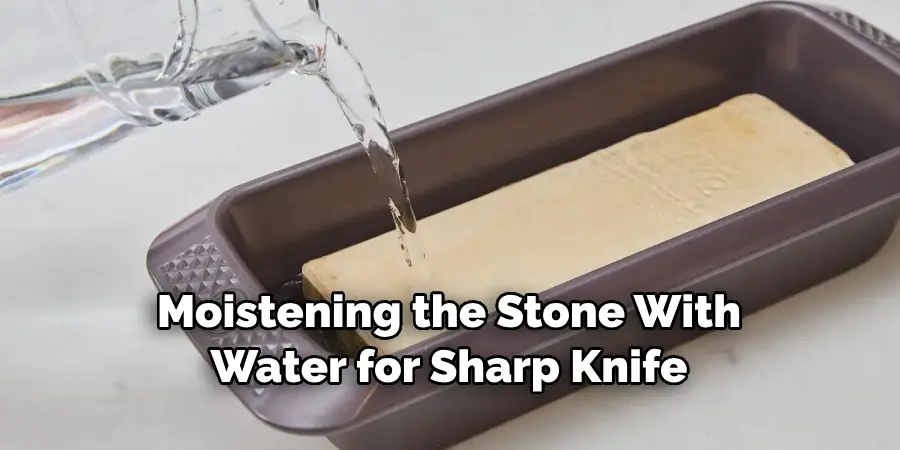
Method 2: Employing a Manual Knife Sharpener
A manual knife sharpener with a slot designed for serrated blades can be used to sharpen a pizza cutter. Place the pizza cutter blade in the appropriate slot and follow the manufacturer’s instructions. Pull the blade through the slot several times, applying light pressure, to restore its sharpness.
Method 3: Trying a Electric Knife Sharpener
If you have access to an electric knife sharpener, it can provide a convenient and efficient method for sharpening your pizza cutter. Select the appropriate slot for serrated blades, if available, and follow the sharpener’s instructions. Run the pizza cutter through the slot a few times to sharpen the blade.
Method 4: Using a Whetstone
A whetstone, also known as a water stone, can be used to sharpen a pizza cutter. Soak the whetstone in water for the recommended time, then place it on a stable surface. Hold the pizza cutter firmly and slide the blade across the stone in a sweeping motion, maintaining a consistent angle. Repeat this process on both sides of the blade.
Method 5: Employing a Diamond Sharpening Rod
A diamond sharpening rod is a versatile tool that can be used to sharpen serrated blades, including pizza cutter blades. Hold the rod vertically and insert the pizza cutter blade into one of the serrations. Move the blade back and forth along the rod, following the contour of the serrations. Repeat this process for each serration until the blade is sharp.
Method 6: Using a Ceramic Sharpening Rod
A ceramic sharpening rod can also be effective for sharpening a pizza cutter blade. Hold the rod vertically and insert the blade into one of the serrations. Move the blade in a circular motion against the ceramic surface, ensuring a consistent angle. Repeat this process for each serration until the blade is sharp.
Method 7: Employing a Sandpaper
Sandpaper of varying grits can be used to sharpen a pizza cutter blade. Start with a coarse grit sandpaper and fold it in half, grit side out. Hold the folded sandpaper and move the blade back and forth along the edge, applying light pressure. Gradually progress to finer grits of sandpaper until the blade is sharp.
Method 8: Trying a Leather Strop
A leather strop can help refine the edge of a pizza cutter blade after initial sharpening. Apply a honing compound or polishing compound to the strop’s surface. Hold the pizza cutter firmly and move the blade across the strop, maintaining a consistent angle. Repeat this motion several times on both sides of the blade for a polished and sharp edge.
Method 9: Using a Dremel Tool
If you have access to a Dremel tool with a suitable attachment, it can be used to sharpen a pizza cutter blade. Secure the pizza cutter and use the Dremel tool to carefully grind the blade’s edge, following the original bevel. Take care not to overheat the blade and ensure a steady hand for precise sharpening.
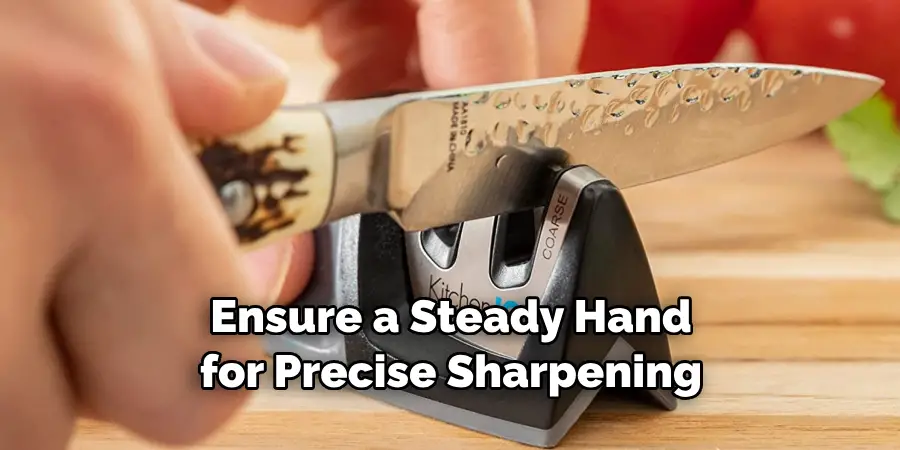
Method 10: Seeking Professional Sharpening Services
If you’re unsure about sharpening the pizza cutter blade yourself or prefer professional expertise, consider seeking the services of a professional knife sharpener. They have the knowledge, experience, and equipment to sharpen the blade effectively and ensure optimal cutting performance.
Some Common Mistakes When Sharpening a Pizza Cutter
Sharpening a pizza cutter can be tricky, and if done incorrectly, it can damage the blade or even make it less effective. Here are some common mistakes to avoid when sharpening your pizza cutter:
1. Not Having the Proper Materials –
You’ll need a whetstone, honing oil, and safety gloves. If you don’t have the right materials, you won’t be able to sharpen your pizza cutter correctly.
2. Not Lubricating the Blade –
It’s important to lubricate the blade with honing oil while sharpening it. This will provide extra protection and keep it from overheating or warping due to friction.
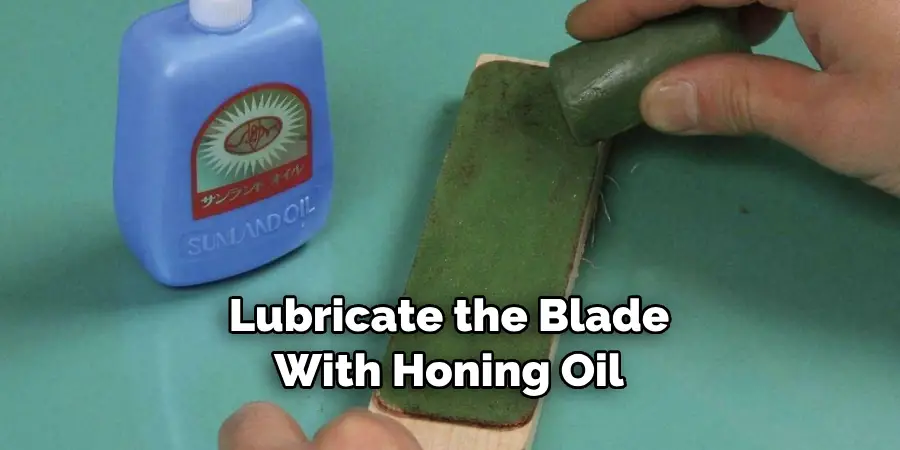
3. Working Too Fast –
Be patient when sharpening your pizza cutter! Moving too quickly can cause problems such as an uneven edge or damaging the blade. Take your time and make sure each stroke of the whetstone is done carefully and evenly on both sides of the blade.
4. Not Testing the Edge –
After sharpening your pizza cutter, you should always test its edge to make sure it’s as sharp as you want it. If not, simply repeat the process until the desired sharpness is achieved.
Following these guidelines will help ensure that your pizza cutter stays in top shape and is able to cut through dough with ease. So next time you’re in the kitchen, break out your whetstone and follow these tips for sharpening your pizza cutter like a pro!
Conclusion
Now that you know the basics of how to sharpen a pizza cutter, you can take the necessary steps to keep your pizza cutter in a safe and workable condition. Be sure to keep your pizza cutter clean and be sure to use proper storage techniques. Be mindful when using steel-wheeled and carbide-wheeled cutters, as each type will require slightly different sharpening instructions.
Further, it is important to read the manufacturer’s instructions before sharpening so that you do not end up damaging the cutter or causing an unnecessary accident. Sharpening your pizza cutter does not have to be an ordeal; with just a few simple steps, its blades remain at their peak efficiency and in top condition.
Professional Focus
Angela Ervin, a former interior designer turned blogger, specializes in kitchen design and renovations. Through her website, she blends her passion for cooking with design expertise, sharing practical and creative ideas. Known for balancing functionality and beauty, Angela’s insightful content has made her a trusted voice in home design and lifestyle.
About the Author
Angela Ervin, an experienced interior designer and blogger, combines her passion for kitchen renovations with storytelling. Living in Petersburg with her family, she enjoys cooking and testing her projects firsthand. Known for her humor and relatable style, Angela shares creative, functional design insights through her content, making her a trusted voice in home design.
Education History
University: Virginia Commonwealth University
Degree: Bachelor of Fine Arts (BFA) in Interior Design
- Angela’s education at VCU focused on mastering core interior design principles, including spatial planning, color theory, materials selection, and sustainable design practices.
- She gained hands-on experience through studio projects and collaborative design exercises, which honed her ability to create functional and aesthetically pleasing environments.
- Her coursework also emphasized problem-solving and practical applications of design, preparing her for real-world projects like her self-directed kitchen renovations.
- The program’s strong foundation in both technical skills and creative expression shaped Angela’s ability to seamlessly integrate form and function in her work.


